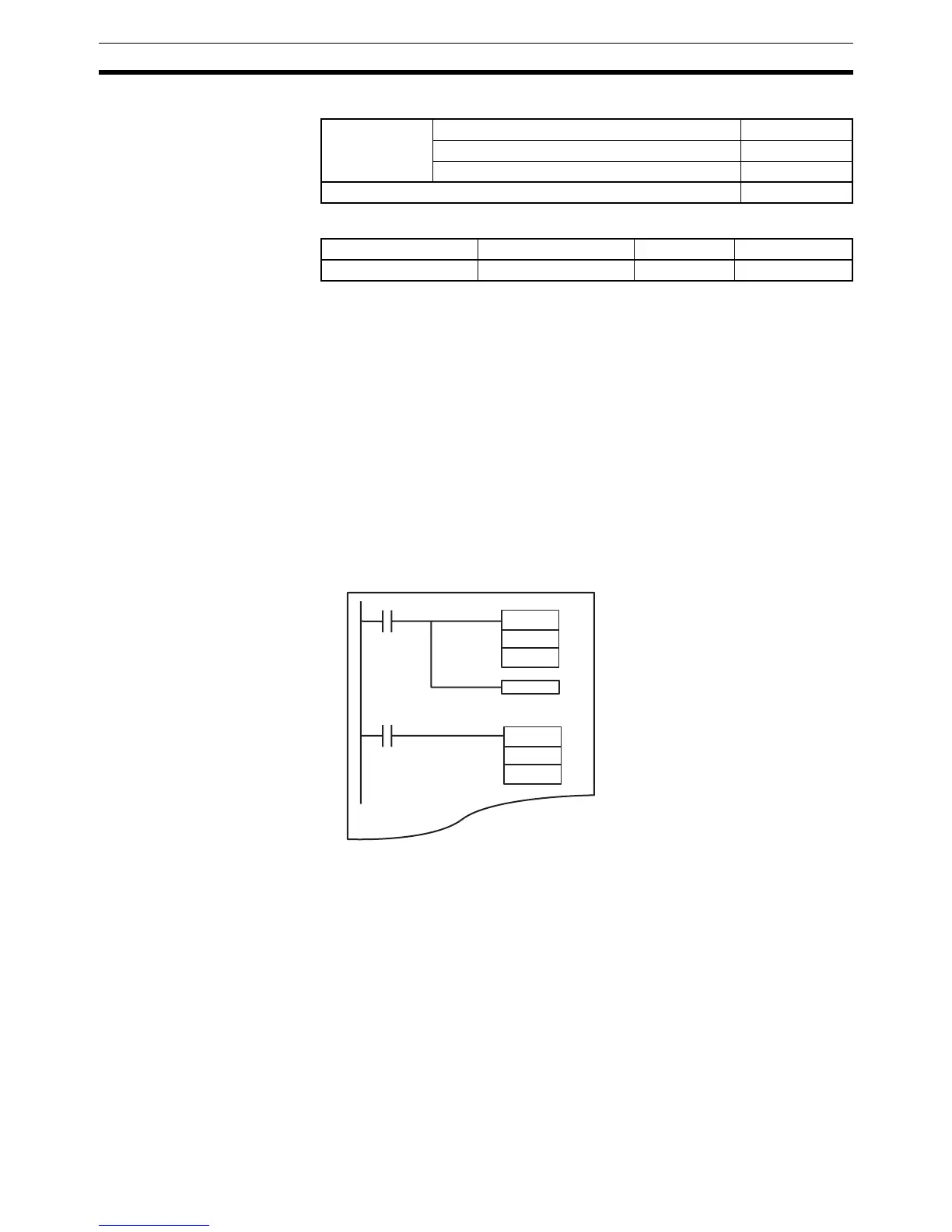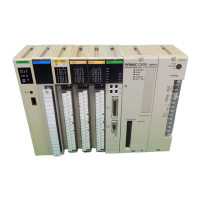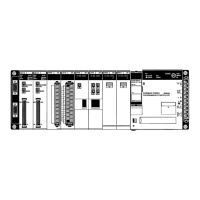1174
Other Instructions Section 3-31
Variations
Applicable Program Areas
Description When the execution condition is ON, CCL(283) restores (reads) the status of
the Condition Flags (except for the ALWAYS ON and ALWAYS OFF Flags).
The Status of the following Condition Flags will be restored (read): ER, CY, >,
=, <, N, OF, UF, >=, <>, and <=.
Condition Flags are shared by all instructions, so the status of these Flags
may change many times during the PLC cycle as each instruction is executed.
Previously, it was necessary to place conditions using the Condition Flags
immediately after the controlling instruction so that the status of the Condition
Flags would not be affected by intervening instructions. The CCS(282) and
CCL(283) instructions allow the controlling instruction to be separated from
the execution conditions that rely on the result.
For example, CCS(282) can store the status of the Equals Flag after execu-
tion of a Comparison Instruction and the result can be restored later. The
result does not have to be used immediately after execution of the instruction.
Refer to
3-31-5 SAVE CONDITION FLAGS: CCS(282) for more examples
showing how to use CCS(282) and CCL(283).
Flags There are no flags affected by these instructions.
3-31-7 CONVERT ADDRESS FROM CV: FRMCV(284)
Purpose Converts a CV-series PLC memory address to its corresponding CS/CJ-
series PLC memory address. FRMCV(284) can be useful when converting
CV-series programs that use PLC memory addresses so that they are com-
patible with CS/CJ-series PLCs.
This instruction is supported by CS1-H, CJ1-H, CJ1M, and CS1D CPU Units
only.
Variations Executed Each Cycle for ON Condition CCL(283)
Executed Once for Upward Differentiation @CCL(283)
Executed Once for Downward Differentiation Not supported.
Immediate Refreshing Specification Not supported.
Block program areas Step program areas Subroutines Interrupt tasks
OK OK OK OK
CCL
CCL(283) is used alone to clear the
Condition Flags after execution of
instruction A so that those results do not
affect instruction B and later instructions.
Task
Instruction A
Instruction B

